In this guide, we’ll explore some of the best rock garden plants that flourish in shady environments, along with their unique characteristics, ideal growing conditions, and how to creatively incorporate them into your landscape.
Hostas
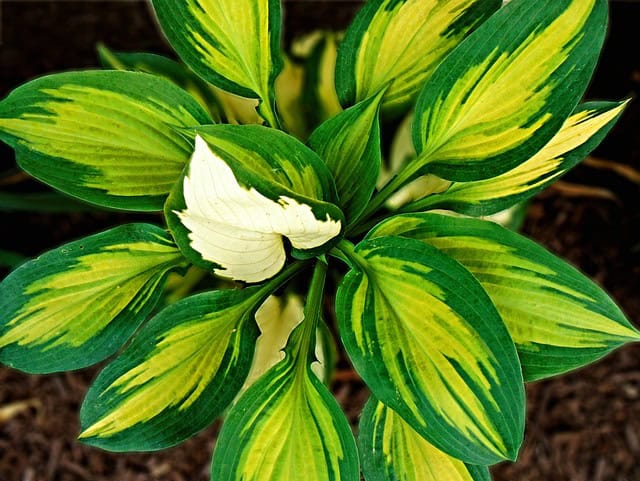
Hostas, often referred to as “plantain lilies,” are the crown jewels of shade gardening. With their broad leaves ranging from deep green to golden yellow or even variegated patterns, these perennials can add a sense of lushness that contrasts beautifully with rocky elements in your garden. They prefer moist, well-drained soil and partial to full shade, making them ideal for shaded rock gardens.
When planting hostas, consider the space they will need. Some varieties, such as ‘Blue Angel’, can grow to be quite large, while others, like ‘Mouse Ears’, are more miniature and fit snugly between rocks. Additionally, their flowers, which bloom in late summer, can provide an unexpected pop of color, attracting pollinators to your shaded retreat.
Cyclamen
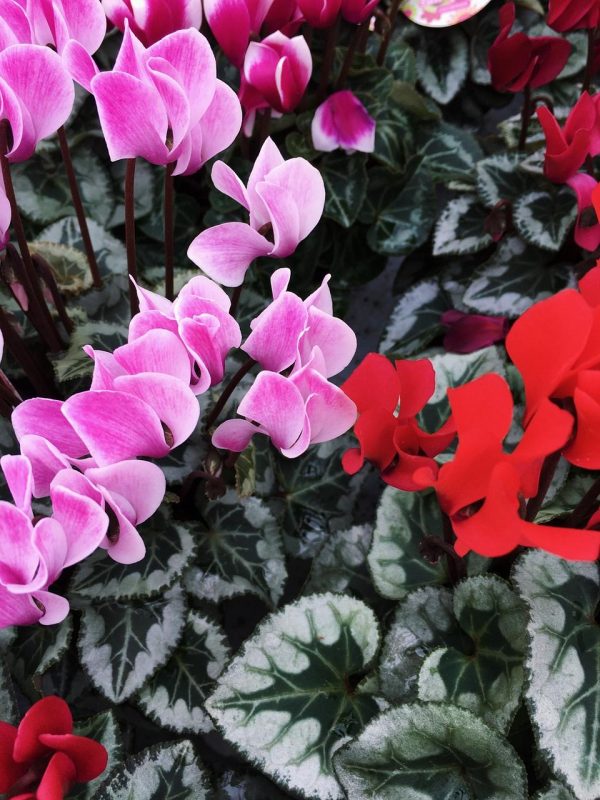
Cyclamen are exquisite perennial plants that display heart-shaped leaves and enchanting, upswept flowers in shades of pink, white, and red. They are exceptionally suited to rock gardens that offer a bit of dappled sunlight or even deep shade. Cyclamen prefer well-drained soil enriched with organic matter, and they thrive in a cooler environment.
Planting cyclamen among rocks allows their whimsical flowers to flourish while enhancing the garden’s aesthetic. They can also serve as early bloomers, bringing life to the landscape right as winter recedes. In colder climates, keep in mind that these delicate beauties can be frost-sensitive, so protect them during harsh winters.
Saxifraga
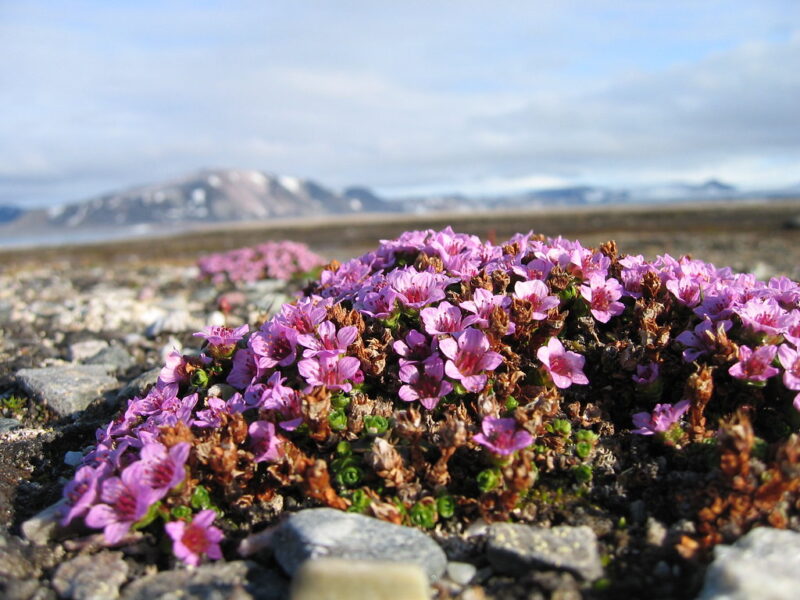
With over 400 species, saxifraga offers a diverse range of forms and colors for rock gardens. Known as “rockbreakers,” saxifraga plants thrive in rocky crevices and can adapt to both sunny and partly shaded areas. Their sturdy rosette leaves and charming flower stalks that arise above rosettes create a layering effect that’s particularly appealing in a rock garden.
One standout variety worth considering is Saxifraga paniculata, which displays vibrant flowers, typically in white or pale yellow, that bloom in spring or early summer. These plants are hardy and make excellent ground covers, filling gaps in the rocky landscape with color and texture. Saxifraga also has the resilience to withstand dry periods, making them a great choice for low-maintenance gardens.
Lungwort

Lungwort (Pulmonaria) is a lesser-known but excellent choice for shaded rock gardens. This perennial is renowned for its spotted leaves, which can range in shades from silver to deep green, and its drooping, tubular flowers that come in shades of blue, pink, and white. Besides aesthetic appeal, lungwort has the added benefit of being deer and rabbit resistant, which is great for maintaining the integrity of your garden.
Lungwort prefers moist, well-drained soil with a good amount of organic material. It thrives under the shade of trees or larger shrubs. When planted in clusters, lungwort can form a stunning groundcover that brightens up shady spots and adds a touch of whimsy, creating a peaceful retreat in your rock garden.
Bleeding Heart
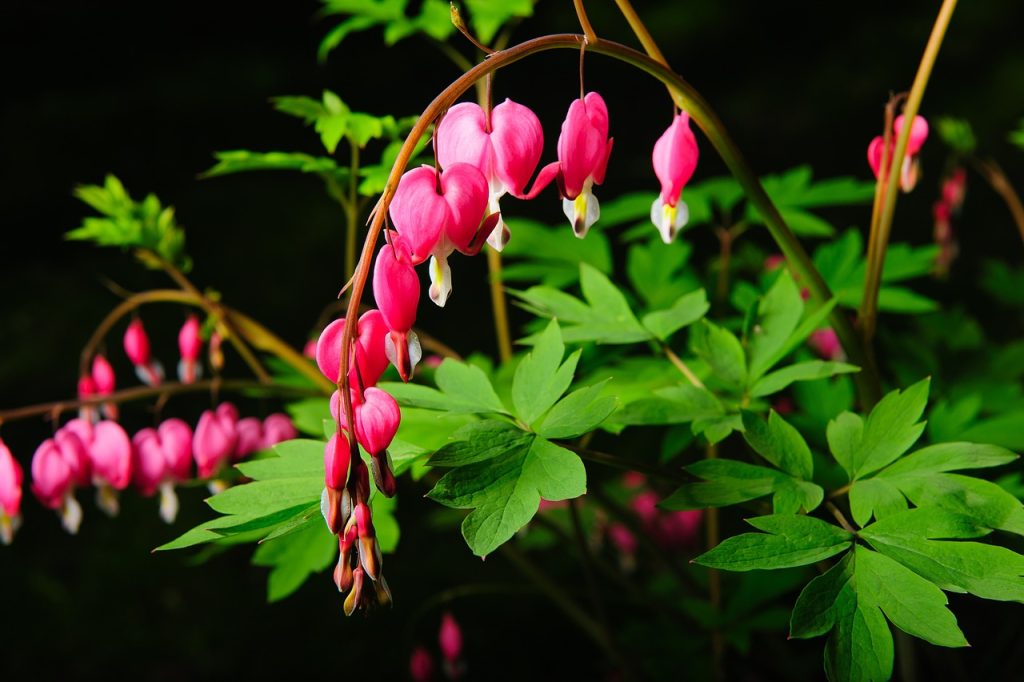
The Bleeding Heart (Dicentra spectabilis) is a classic shade garden plant with a striking display of heart-shaped flowers. These perennial plants prefer cooler climates, thriving in moist, well-drained soil and dappled sunlight. Bleeding Hearts bloom in late spring to early summer and can create a stunning focal point within a rock garden.
Their unique flower structure resembles tiny, pink hearts, providing a delicate contrast to the ruggedness of stones. When combined with other shade-loving plants, Bleeding Hearts provide a whimsical touch that draws the eye and encourages exploration of the garden. After their blooms fade, their lovely fern-like foliage continues to provide interest until winter.
Japanese Painted Fern
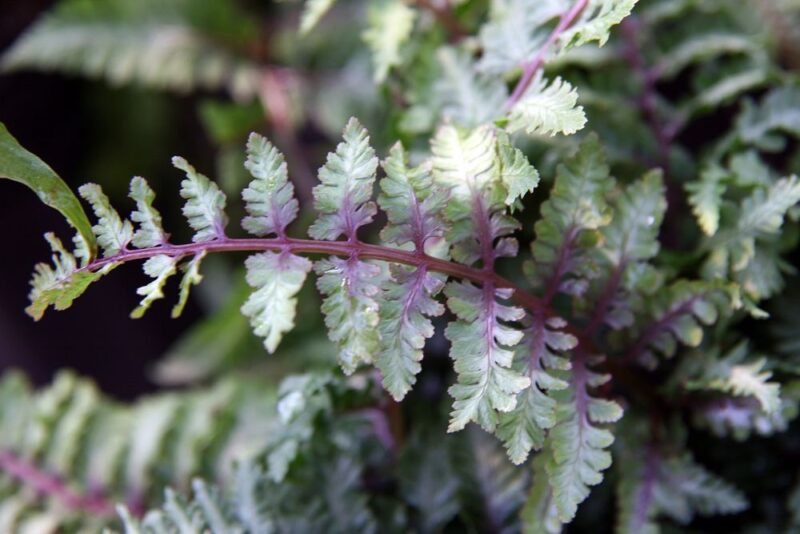
Adding texture and elegance to a shaded rock garden, the Japanese Painted Fern (Athyrium niponicum) is characterized by its unique fronds displaying striking metallic hues of silver and purple. This fern thrives in moist, well-drained soil and can tolerate a range of light conditions, from partial shade to full shade.
Japanese Painted Ferns are exceptional for softening the harsh edges of rocky areas in your garden. Their feathery foliage creates movement and depth, while their adaptability makes them ideal companions for other shade-loving plants. A sea of these ferns can instill a sense of tranquility and grace and creates a perfect backdrop for vibrant flowers.
Coral Bells
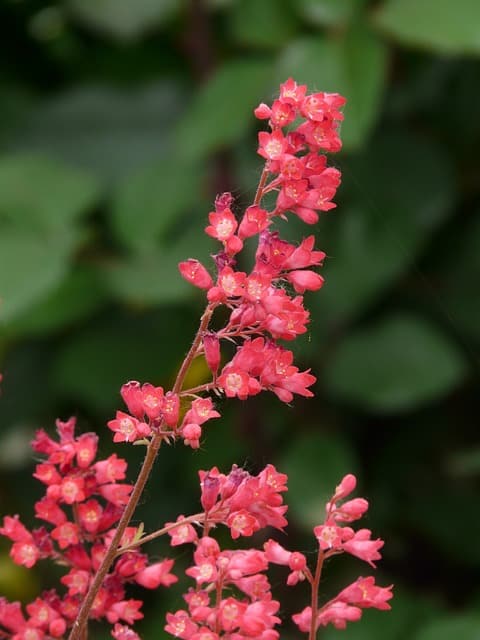
Coral Bells (Heuchera) are another fantastic option for shaded gardens. Known for their vibrant foliage in stunning hues – ranging from deep burgundy to shimmering lime – Coral Bells add texture and color throughout the growing season. These hardy perennials prefer well-drained, compost-rich soil and thrive in partial shade, making them perfect companions for rock gardens.
The delicate bell-shaped flowers that arise on tall stems in late spring and summer draw in hummingbirds and beneficial pollinators. Coral Bells can be used as a border plant or scattered throughout a rock garden to create visual interest against the stones. Their versatility and beauty make them a staple in any shade-loving garden.
Ajuga
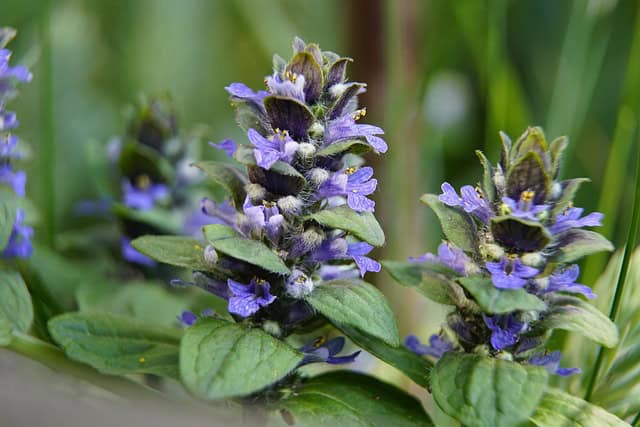
Ajuga, also known as Bugleweed, is a fantastic ground cover for shaded areas in rock gardens. With glossy leaves that can vary from green to deep, purple hues, Ajuga produces striking flower spikes in the spring that bring splashes of blue or purple to your space. This perennial thrives in well-drained soils and tends to spread quickly, providing an excellent backdrop for more structured plants.
Not only does Ajuga thrive in shade, but it also withstands drought once established, making it a low-maintenance choice. As it grows, it will fill in gaps between stones beautifully, softening the harsh lines of the rock while adding an organic feel to your garden. Ajuga also offers the advantage of being relatively pest-resistant.
Liriope
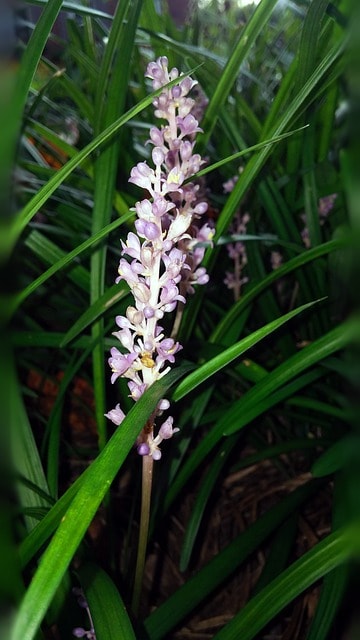
Liriope, commonly known as Monkey Grass, is an excellent choice for rock gardens, particularly in shady settings. This hardy perennial is adaptable to various soil types and can thrive in conditions ranging from light shade to full shade. Its long blades of grass-like foliage add structure and texture, while its spiky purple or white flowers that bloom in late summer bring a splash of color to the landscape.
Liriope is often used as a border plant along pathways or as a ground cover to prevent soil erosion. Its tolerance to various soil conditions makes it a versatile choice for rocky environments, and it pairs well with both flowering plants and evergreen shrubs for a well-rounded look.
Epimedium
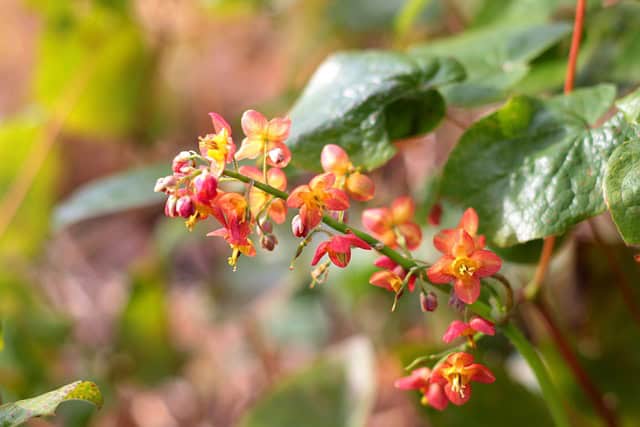
Epimedium, often called Fairy Wings or Bishop’s Hat, is a shade-loving perennial that is slowly gaining popularity in rock gardens. Known for its unique heart-shaped leaves and delicate, nodding flowers, Epimedium is extremely versatile and thrives in rich, well-drained soil. It can flourish even in heavier shade, providing greenery when many other plants may struggle.
As a ground cover, Epimedium helps to keep the soil moist and can prevent weeds from taking over. It usually blooms in early spring, offering a luxurious transition from winter to spring, and can be used gracefully in conjunction with other textured foliage plants. The added dimension of their foliage allows for creative planting combinations that can visually elevate the rock garden.
Spurge
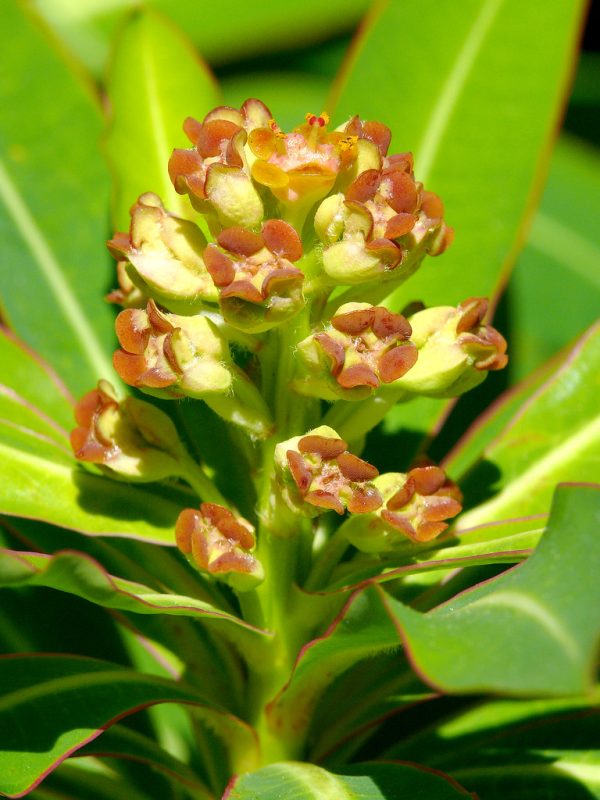
When looking for a tough, drought-tolerant plant for your shaded rock garden, consider Spurge (Euphorbia). This unique plant family encompasses a wide variety of species, and many provide intriguing foliage that comes in vibrant greens, variegated patterns, or colorful bracts. Most spurges thrive in well-drained soil and can stand up to dry conditions, making them perfect for rock gardens.
Spurge is noteworthy for its unexpected bright bracts, especially in late spring, that can beautifully contrast with the stony landscape. The lower-growing varieties can fill in spaces effectively, while taller species can add structural interest. Best of all, spurges are generally pest-resistant and require little maintenance once established, making them a reliable addition to your garden.
Big Root Geranium
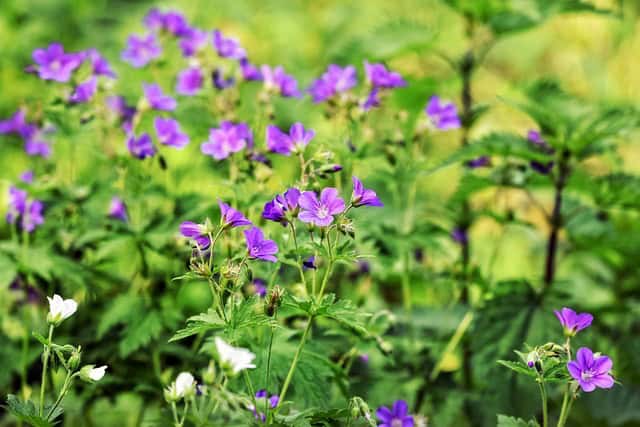
Big Root Geranium (Geranium macrorrhizum) is a perennial that thrives under tree canopies and in other shady spaces within rock gardens. This variety is known for its fragrant, velvety leaves and abundant pink to white flowers that bloom in early summer. Its expansive root system allows it to spread gracefully, creating a beautiful carpet of foliage that acts as a natural weed suppressant.
Big Root Geranium prefers well-drained soils enriched with organic matter, and it tolerates varying light conditions quite well. It can seamlessly fill in between rocky spaces, contributing both color and texture. Additionally, its aromatic foliage releases a pleasant scent when brushed against, further enhancing the sensory experience of your rock garden.
Deadnettle
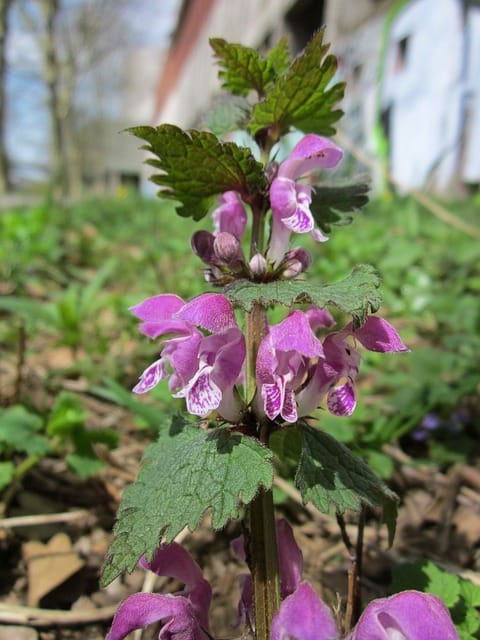
Deadnettle (Lamium) is an underappreciated gem for shady rock gardens. With its beautiful variegated leaves and colorful tubular flowers that bloom from spring to fall, Lamium brings vibrant energy to darker spaces. This hardy perennial thrives in well-draining soil, prefers moderate moisture, and displays adaptability across different shady light environments.
Deadnettle serves as an effective ground cover, thanks to its fast-growing habit and dense foliage that blankets any bare patches. Its charming flower spikes are a magnet for bees and butterflies, further enriching your rock garden’s ecosystem. When combined with other shade-loving perennials, Deadnettle forms an enchanting tapestry that complements the rugged texture of stones and gravel.





